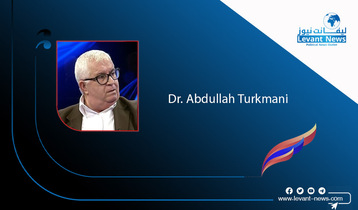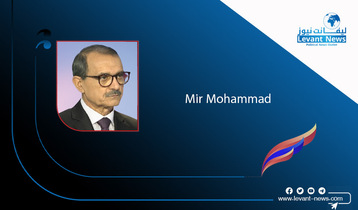-
The implications of Gaza’s latest flare-up

Strange things happened in Gaza’s latest flare-up: first and foremost was the shortness of the fighting – three days, known in Britain as a “long weekend”- 56 hours in total. That was less than one-fifth of the time the violence continued in May 2021, ignited by the al-Aqsa mosque riots spurred by the eviction of Palestinians from the Sheikh Jarrah neighbourhood in occupied East Jerusalem.
The most bizarre aspect, however, was that the Islamist movement Hamas did not join the attack in response to the pre-emptive Israeli strikes on Gaza, codenamed “Operation Breaking Dawn”. Hamas, though it expressed support for the Iranian-backed Palestinian Islamic Jihad (PIJ), stayed completely out of the conflict. This was the sixth major escalation since Hamas consolidated its control of the Gaza Strip back in 2007 and Israel tightened its blockade on the 2 million Palestinians in the coastal enclave.
Forty-nine Palestinians were killed, among them 16 children, and over 300 more were injured in Israel's military operation, which also saw more than a thousand rockets fired by PIJ towards Israel. No Israelis were killed and 60 were lightly injured. Unlike Hamas, PIJ is not responsible for running the day-to-day affairs of the impoverished territory. As a result it is viewed as a more militant resistance faction, often acting independently and sometimes even undermining Hamas’s authority.
Analysts believe one factor may have been that Hamas was seeking to rebuild its arsenal of weapons and tunnels under the border with Israel. The group does not want to give Israel an excuse to cancel the 14,000 Israeli work permits issued for Gaza since last year, or shut down the more consistent supply of electricity that currently reaches the strip’s sole power plant; both measures have made small but significant improvements to quality of life for the area’s impoverished population, of which 50% are unemployed.
The Gaza Strip has remained relatively quiet since the 11-day war in May last year, which killed 256 people in Gaza and 14 people in Israel. The new round of fighting came as Israel prepares for its fifth elections in four years after the collapse of a short-lived coalition government, which ousted the long-time prime minister, Benjamin (“Bibi”) Netanyahu. The bloodshed did not escalate into another all-out conflict, however, owing to a major gamble: that Hamas would resist being drawn into the fray.
The Israel Defence Forces (IDF) performed well. Israeli commentators were impressed by the precise intelligence provided by the Shin Bet security service and military intelligence on PIJ’s intent to commit attacks, as well as on the location of the organization’s leaders. Finally, there was the success against PIJ’s rocket and drone capabilities.
The general view is that until late July the tensions with the Gaza Strip were low. It was known that PIJ in Gaza was preparing attacks, but the warnings surged immediately after the arrest of Bassam al-Saadi, the organization’s chief in the northern West Bank town of Jenin, on the night of August 1. Videos posted on social media by Palestinians showed Border Policemen dragging Saadi, who is 62, and has been in and out of Israeli prisons for two decades.
The view in Israel was that PIJ’s efforts at revenge were decided on by the organization’s secretary-general, Ziad al-Nakhalah, who was in Tehran at the time. Perhaps it was an emotional reaction, with Nakhalah taking to heart the clips showing Saadi being dragged across the floor by the Israeli Border Police when he was taken into custody, with an attack dog on hand.
That revenge, it appears, was a reaction resembling that by Donald Trump in January 2020 when the then-US president ordered the assassination of the Iranian Revolutionary Guards commander General Qassem Soleimani. This happened after the Iranians insulted him by having their militias launch rockets at an American base in Iraq despite the president’s threats.
The Israel-Palestine conflict is one of the oldest, intractable and divisive issues in the world. But there are currently many other distractions: Russia’s invasion of Ukraine, US-China tensions over Taiwan, the world energy crisis and global warming. Something needs to happen to persuade governments – including Israel’s next one - to resolve this conflict rather than just manage it, and not to be so passive about the next predictable flare-up.
It is true that PIJ has suffered a setback in the fighting, but not one core issue of the Israel-Gaza relationship has been even remotely addressed. Egypt, Turkey and Qatar helped negotiate the ceasefire and Doha agreed to pay for the damage done to Palestinian homes. Maybe they can do more, with the support of the US?
As the liberal newspaper Haaretz editorialised last week: “The decision of the Hamas leadership to act as the ‘responsible adult’ in the latest round of fighting and avoid escalation may be signalling a willingness to reach an understanding on a long-term period of quiet with Israel, to work to improve the welfare of Gazans, to pave the way for an international effort to rehabilitate the enclave and perhaps even to reaching an agreement on returning Israeli hostages and soldiers missing in action.” Let’s hope they are right.
BY: IAN BLACK
You May Also Like
Popular Posts
Caricature
BENEFIT Sponsors BuildHer...
- April 23, 2025
BENEFIT, the Kingdom’s innovator and leading company in Fintech and electronic financial transactions service, has sponsored the BuildHer CityHack 2025 Hackathon, a two-day event spearheaded by the College of Engineering and Technology at the Royal University for Women (RUW).
Aimed at secondary school students, the event brought together a distinguished group of academic professionals and technology experts to mentor and inspire young participants.
More than 100 high school students from across the Kingdom of Bahrain took part in the hackathon, which featured an intensive programme of training workshops and hands-on sessions. These activities were tailored to enhance participants’ critical thinking, collaborative problem-solving, and team-building capabilities, while also encouraging the development of practical and sustainable solutions to contemporary challenges using modern technological tools.
BENEFIT’s Chief Executive Mr. Abdulwahed AlJanahi, commented: “Our support for this educational hackathon reflects our long-term strategic vision to nurture the talents of emerging national youth and empower the next generation of accomplished female leaders in technology. By fostering creativity and innovation, we aim to contribute meaningfully to Bahrain’s comprehensive development goals and align with the aspirations outlined in the Kingdom’s Vision 2030—an ambition in which BENEFIT plays a central role.”
Professor Riyadh Yousif Hamzah, President of the Royal University for Women, commented: “This initiative reflects our commitment to advancing women in STEM fields. We're cultivating a generation of creative, solution-driven female leaders who will drive national development. Our partnership with BENEFIT exemplifies the powerful synergy between academia and private sector in supporting educational innovation.”
Hanan Abdulla Hasan, Senior Manager, PR & Communication at BENEFIT, said: “We are honoured to collaborate with RUW in supporting this remarkable technology-focused event. It highlights our commitment to social responsibility, and our ongoing efforts to enhance the digital and innovation capabilities of young Bahraini women and foster their ability to harness technological tools in the service of a smarter, more sustainable future.”
For his part, Dr. Humam ElAgha, Acting Dean of the College of Engineering and Technology at the University, said: “BuildHer CityHack 2025 embodies our hands-on approach to education. By tackling real-world problems through creative thinking and sustainable solutions, we're preparing women to thrive in the knowledge economy – a cornerstone of the University's vision.”
opinion
Report
ads
Newsletter
Subscribe to our mailing list to get the new updates!




















